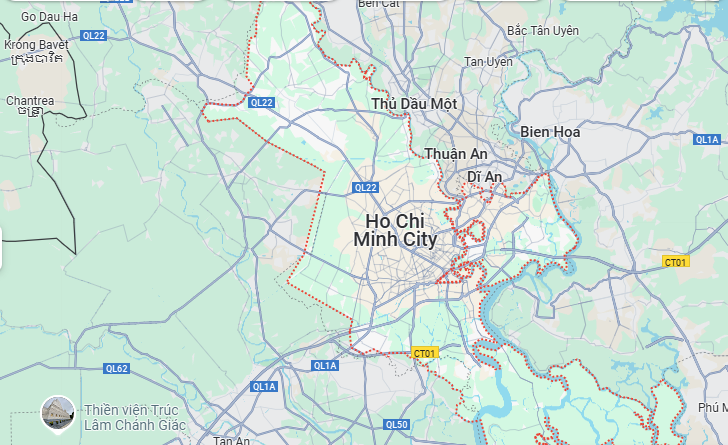Ho Chi Minh City stands as Vietnam’s largest and most vibrant metropolis, playing a crucial role in the country’s economic, cultural, and historical landscape. Known historically as Saigon, the city was renamed in 1976 after the revolutionary leader Ho Chi Minh, marking a new era following the end of the Vietnam War. Today, Ho Chi Minh City is a bustling hub with a population exceeding nine million people, making it the most populous urban area in Vietnam.
The city’s rich history is reflected in its unique blend of traditional Vietnamese culture and French colonial architecture. Originally a vital trading port and the capital of the French colony of Cochinchina, Saigon was later the capital of the Republic of Vietnam until 1975. This legacy is visible in landmarks such as the Notre-Dame Cathedral Basilica of Saigon and the Saigon Central Post Office, which continue to attract both tourists and locals alike.
Ho Chi Minh City’s economic significance cannot be overstated. It is considered the economic powerhouse of Vietnam, contributing a large share of the country’s gross domestic product. The city is a major center for manufacturing, finance, real estate, and information technology. It is home to the Saigon Stock Exchange, one of the country’s primary financial markets. Multinational corporations and foreign investors have established a strong presence here, attracted by the city’s dynamic business environment and growing infrastructure.
Tourism is another key aspect of Ho Chi Minh City’s profile. The city offers a wide range of attractions, from historic museums to lively markets and vibrant street life. The War Remnants Museum provides visitors with a deep and often sobering look at the history of the Vietnam War and its lasting impact. Meanwhile, the bustling Ben Thanh Market offers an authentic shopping experience filled with local products, crafts, and street food. For those interested in exploring beyond the city limits, the nearby Cu Chi Tunnels provide a glimpse into the underground network used during the war, drawing many tourists each year.
Transportation in Ho Chi Minh City is a mix of modern and traditional systems. Tan Son Nhat International Airport serves as the busiest airport in Vietnam and the main gateway to the city. Within the city, motorbikes dominate the streets, alongside an extensive network of buses and taxis. The rise of ride-hailing services has also transformed urban mobility. To address traffic congestion, the city is investing heavily in public transit infrastructure, including the ongoing construction of a metro system expected to improve daily commutes significantly.
Education in Ho Chi Minh City is well-developed, with numerous top universities and colleges that attract students from across the country and beyond. Vietnam National University, University of Economics, and University of Technology are some of the city’s notable institutions. These universities play a critical role in providing skilled professionals who contribute to the city’s booming industries and help sustain its economic growth.
The city experiences a tropical climate characterized by warm temperatures throughout the year, averaging between 27 and 30 degrees Celsius. It has two main seasons: a wet season from May to November and a dry season from December to April. This climate supports the city’s lush greenery and vibrant street markets, making it a lively place to live and visit year-round.
Ho Chi Minh City continues to grow as a center of innovation and cultural exchange. It is a melting pot of different ethnic groups, primarily the Vietnamese Kinh, but also including Chinese, Khmer, and Cham minorities. This diversity enriches the city’s cultural fabric and offers a variety of culinary and artistic experiences.
The city’s importance extends beyond Vietnam’s borders, as it plays a vital role in the country’s integration into global trade and tourism networks. Its strategic location near the Mekong Delta further enhances its status as a gateway for commerce and travel in Southeast Asia. With strong government support and private sector investment, Ho Chi Minh City is poised to maintain its position as a leading economic and cultural hub in the region.
As a destination, Ho Chi Minh City offers visitors a unique combination of history, culture, modern development, and dynamic urban life. Whether exploring historic sites, enjoying world-class cuisine, or experiencing vibrant markets and festivals, the city provides rich and memorable experiences. Its continued growth and development ensure that it will remain at the forefront of Vietnam’s progress for years to come.







